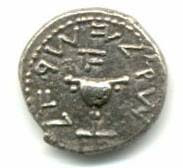The lesson started off with a preflight of N73455, back since last week with it's registration certificate renewed and now a functioning transponder. The preflight showed some water in the sumps, which I drained till it was all gone. That's why we always check and it did take a couple fuel sample cups to drain it off, and I drained the fuel strainer for an extra long time and checked it multiple times to be sure and that all that was left was 100LL. Water does not work well in an engine, at all.
The preflight of N73455 showed a couple interesting issues besides the fuel:
Yes, both the Attitude Indicator and Heading Indicator are inoperative, as is the beacon and the second radio. Luckily we can use the strobes in place of the beacon and you can fly VFR without the gyros and just use the compass.
The engine started up with no issue and everything checked out fine.
I do a good takeoff and we head to Romeo and Ray says we'll do some work on emergency procedures and such. Ok, I've got those engine and electrical fires in flight procedures memorized so I should be good to go.
So we get to Romeo, overfly the field, check the windsock, and enter the down wind for Runway 18 and then....
The engine goes to idle. Yes, the loudest sound in the air is when the engine gets quiet.
"I've got the throttle" says Ray, "your engine just quit".
So I immediately set for best glide speed, 65 knots. Then I do a close in base to final and bring it in to land. Not too bad but I almost get going too fast on final so we went over that and then back taxied to start again.
"Normal takeoff", says Ray.
I begin the takeoff, we just get in the air and have a positive rate of climb and the engine goes idle again. "I've got the throttle" says Ray, "Engine failure on takeoff".
So I keep the nose down, we're still in ground effect, and I make a bit of a bouncy landing but get it down on the runway. The big thing is too many newer pilots instinctively try to pull back during an engine failure on takeoff and that's a quick stalling path towards disaster. Having just read about the phenomenon I knew to push forward if necessary, not pull back and that helped prevent an instinctive and wrong response.
Ray then goes over the technique a bit more and notes that in the phase of flight I was in, being in ground effect, I just had to hold it off and then flare to land.
We do it again a couple times and I get it down, including one from a little higher than ground effect to get the nose down as an important step.
Then we do a takeoff and I actually get fully airborne and then "I've got the throttle" says Ray, "Engine failure on takeoff, you have no runway remaining".
So I keep it at 65 knots, basically pick a spot pretty much straight ahead as there is neither altitude nor airspeed available to turn safely, and prep to land in a corn field, which will probably suck. Ray puts the throttle in and we get back to pattern altitude and then we do another engine out on the downwind.
Then back to Pontiac for a nice normal landing that had a sudden bit of left crosswind to make life interesting.
Lots of good practice. The first time the engine went idle on downwind certainly got my heart rate up, as did that first engine out on takeoff drill.
Ray stated I will not need to demonstrate these skills on the checkride, but need to experience them to be able to handle them if they occur in real life flying.
That's 1.2 and 7 landings and lots of emergency simulations for a very valuable lesson indeed.


3 comments:
Good instructor!
Learning what to do/not do in emergencies is critical.
And as my instructor used to joke: "A propeller is just a fan to keep the pilot cool. Turn it off and watch him sweat!".
drjim: That he is. I keep learning a lot from him every time we go up.
Yes, there was certainly some sweating when the emergency was announced!
yeah, I remember the first time mine pulled the throttle back just after we rotated and said "Engine OUT! Began your engine-out-on-takeoff plan".
And just like yours, once he saw what I was doing, and doing correctly, he firewalled it and said to go around.
Sure caught me off guard, though!
Just like it would in real life.....
Post a Comment